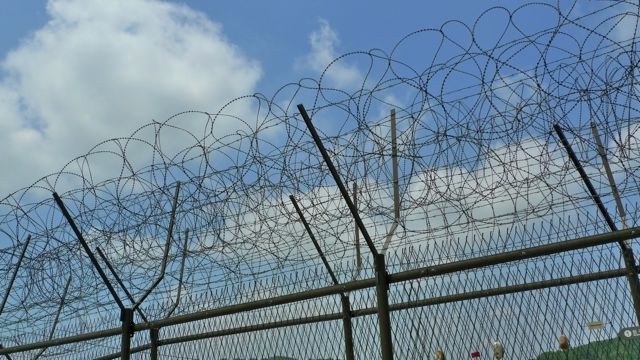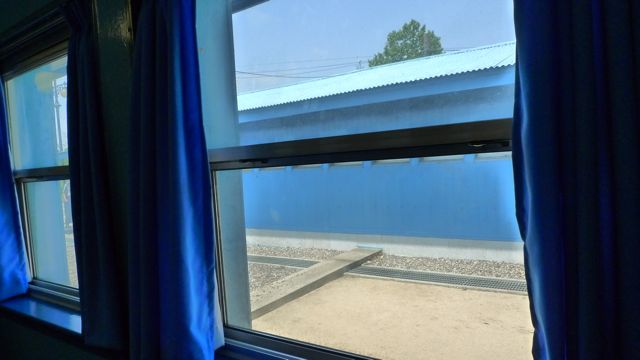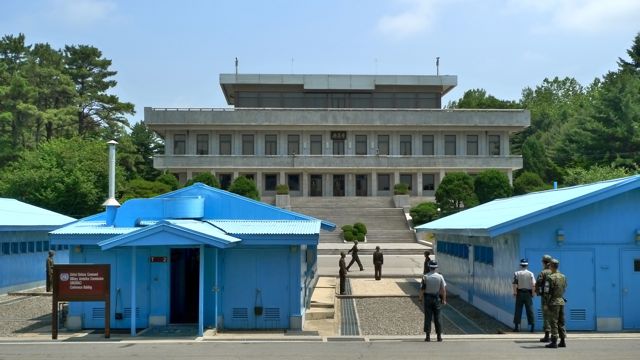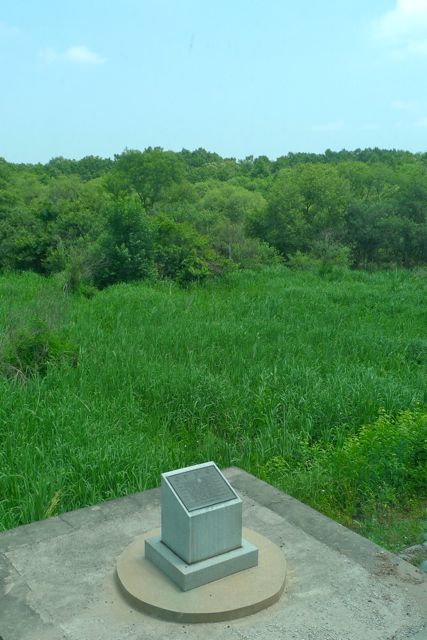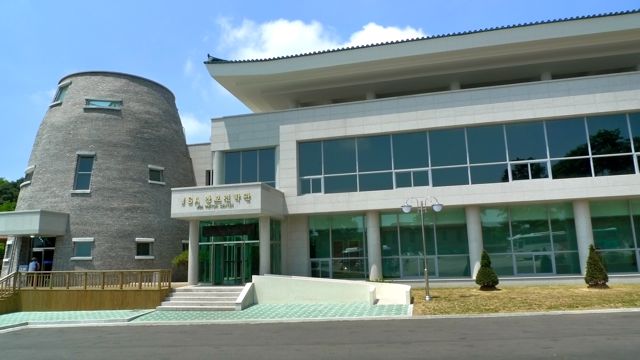The waiver in front of me was ominous.
It said that I understood I was entering into “a hostile area with possibility of injury or death as a direct result of enemy action … The United Nations Command, the United States of America and the Republic of Korea cannot guarantee the safety of visitors and may not be held accountable in the event of a hostile enemy act.”
After scribbling my name at the bottom, I was off into some of the most dangerous territory in the world.
North Korea.
My tour took me through the demilitarized zone, Camp Bonifas, Panmunjom and the joint security area. I didn’t venture deep into the country — I only had access to the no man’s land that straddles North and South Korea.
There’s a dress code that all visitors must follow. “Business casual,” said the woman on the phone, as if I was headed off to a party with crackers and cheese balls. Visitors are not allowed to wear military-looking clothes, see-through garments, athletic clothing, faded jeans, short skirts or anything that displayed any affection for the United States. For instance, the New York part of an “I heart NY” shirt would have to be covered with duct tape.
The dress code extended to shoes. I could not wear slippers, flip flops or anything else that lacked straps. According to my guide, straps were a necessity in the event I should have to run for my life.
“We are still at war,” she reminded me. “We’re just taking a break.”
Our convoy passed through several checkpoints, including fences swathed in razor wire, punctuated with guard posts every 100-200 meters. The river here is filled with spikes and nets. My guide said she often sees floating dead bodies.
“You know, if we see a North Korean drowning, we aren’t allowed to help them,” my guide said. I asked how she can distinguish between a drowning North Korean from a South Korean.
“We just know,” she sniffed.
The road is outfitted with the occasional “tank trap,” what looks like a concrete overpass over the highway. These are actually filled with explosives. During an attack the trap is detonated, collapsing over the road and effectively cutting off transportation.
First stop on the tour was Camp Bonifas. Some 400 soldiers are stationed here, including about 50 from the U.S. In exchange for their work, they can enjoy use of what Sports Illustrated has called the world’s most dangerous golf course. Supposedly at least one shot has exploded a land mine.
I was accompanied by a UN security guard. He was there for my protection, of course, but he was also there to enforce the rules. No hand gestures. No pointing. No waving. No photography. No venturing out on my own.
It took everything I had to restrain myself and not run around in circles like a pointing, gesturing, waving tasmanian devil.
At that point I was taken to the border, which is straddled by conference buildings that have doors on each side of the border. It reminded me of those hotel rooms where you share a bathroom with someone on the other side. When North Korea is inside, they lock the South Korea door. And when South Korea is inside, they lock out the North Koreans. God knows what’ll happen if someone forgets to unlock the door for the other.
That concrete slab on the ground out there is the border.
Soldiers surrounded the buildings, facing off in the world’s greatest staring contest. On the other side, a group of North Korean tourists took photos of us taking photos of them.
Nearby were two villages, one north, one south, separated by fields of land mines. About 200 people live in the southern village and nearby farmland. They don’t pay taxes, they receive hefty benefits from the government, and they are paid handsomely for the ginseng and crops they produce. They are also protected by guards and cannot walk anywhere at night.
The northern village is known as Propaganda Village, although I’m sure the North Koreans call it something else. The buildings are tall, sleek high-rises. They are also completely empty, allegedly constructed to create an illusion of progress and modernity. Until a few years ago, loudspeakers blasted messages that proclaimed Kim Jong-Il to be the greatest leader of all time.
The two countries also have rival flag poles. Apparently the South Korean flag pole was 100 meters high, which chapped North Korea’s ego. In retaliation, North Korea constructed a 160-meter tall tower, thus dwarfing the South Korean flag pole. (When will they learn size doesn’t matter?)
My tour included some incredibly grim sites, like the Bridge of No Return, which was used for prisoner exchanges during the Korean War, and the place where two U.S. Army officers were axed to death while they were trimming a poplar tree.
In the rare moments when I was allowed out of the bus, I was instructed to leave all of my possessions behind, including my passport, which made me incredibly uncomfortable. I was only allowed to travel with a pocket full of money, probably because my tour ended at the Korea demilitarized zone souvenir shop, which featured an array of pricey North Korean souvenirs.
In the end, the border tour had the disturbing quality of a North Korean amusement park, shuffled from one line to another, wrangled into a cafe for lunch, then dumped at a gift shop. Borderline weirdness — but with a gun pointed at me.
Probably the most powerful part of my tour was when it was over, and a North Korean defector was on my bus. She told me that she was smuggled over the border to China where she was sold into marriage — and slavery. She hid for three years in China, constantly afraid that she would be discovered and deported back to North Korea. She gave birth to a daughter there but had to leave her behind during her escape. Then the woman walked through Vietnam into Cambodia, eventually making her way into South Korea.
She has a job now and is saving up money, plotting a way to get her daughter back and help the rest of her family defect to South Korea.
Obviously that’s the biggest casualty of this war: Entire families divided by razor wire and concrete slabs, separated by soldiers who stare at each other all day long.


